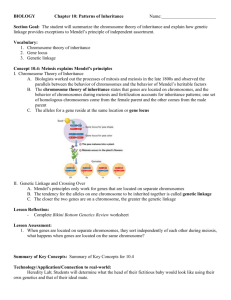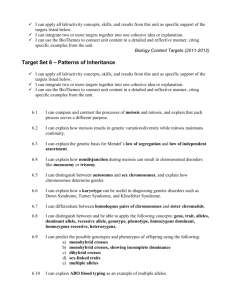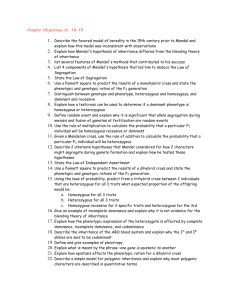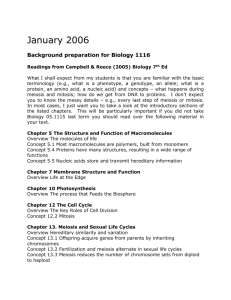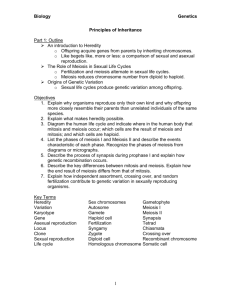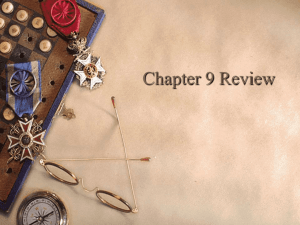An Introduction to Metabolism
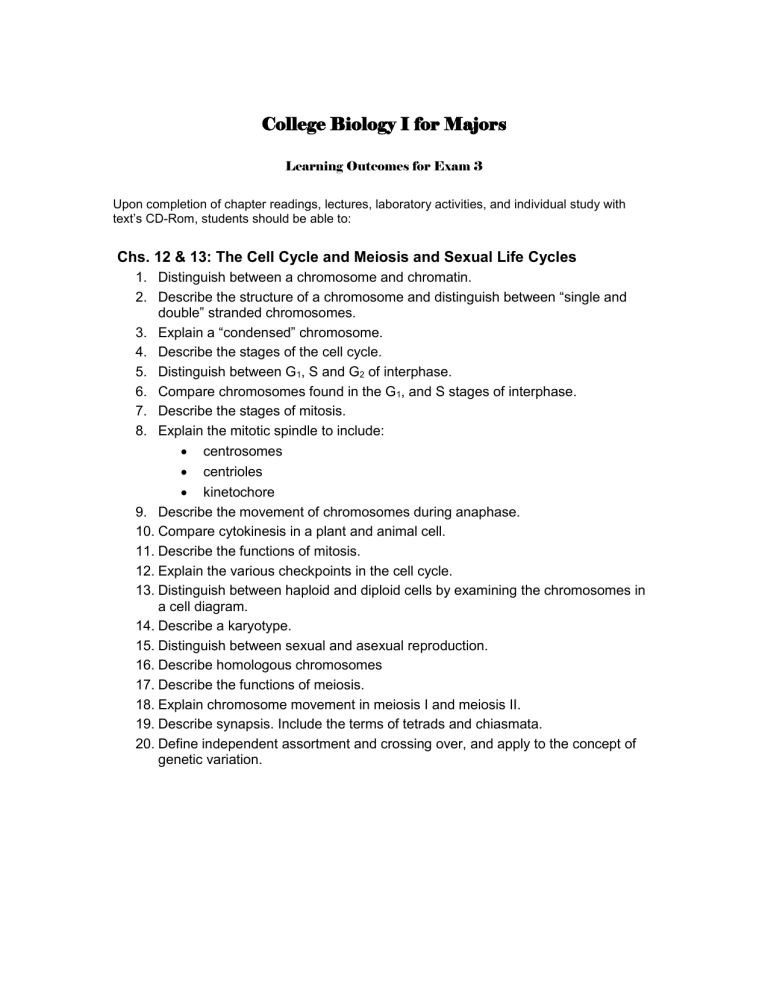
College Biology I for Majors
Learning Outcomes for Exam 3
Upon completion of chapter readings, lectures, laboratory activities, and individual study with text’s CD-Rom, students should be able to:
Chs. 12 & 13: The Cell Cycle and Meiosis and Sexual Life Cycles
1. Distinguish between a chromosome and chromatin.
2. Describe the structure of a chromosome and distinguish between “single and double” stranded chromosomes.
3.
Explain a “condensed” chromosome.
4. Describe the stages of the cell cycle.
5. Distinguish between G
1
, S and G
2
of interphase.
6. Compare chromosomes found in the G
1
, and S stages of interphase.
7. Describe the stages of mitosis.
8. Explain the mitotic spindle to include:
centrosomes
centrioles
kinetochore
9. Describe the movement of chromosomes during anaphase.
10. Compare cytokinesis in a plant and animal cell.
11. Describe the functions of mitosis.
12. Explain the various checkpoints in the cell cycle.
13. Distinguish between haploid and diploid cells by examining the chromosomes in a cell diagram.
14. Describe a karyotype.
15. Distinguish between sexual and asexual reproduction.
16. Describe homologous chromosomes
17. Describe the functions of meiosis.
18. Explain chromosome movement in meiosis I and meiosis II.
19. Describe synapsis. Include the terms of tetrads and chiasmata.
20. Define independent assortment and crossing over, and apply to the concept of genetic variation.
Ch. 14
:
Mendel and the Gene Idea
1. State Mendel’s law of segregation in your own words.
2. Compare and contrast between:
phenotype and genotype
heterozygous and homozygous
dominant and recessive
3. Explain meaning of the term allele.
4. Define a random event: discuss why it is significant that allele segregation during meiosis and fusion of gametes at fertilization are random events.
5. Construct a Punnett square to predict the results of a monohybrid cross and state the phenotype and genotype ratios of the F
2
generation.
6. Describe how a testcross can be used to determine if a dominant phenotype is homozygous or heterozygous.
7. Determine the probability that a particular F
2
individual will be homozygous recessive or dominant, or the probability that particular F
2
individual will be heterozygous.
8. State Mendel’s law of independent assortment in your own words.
9. Predict the results of a dihybrid cross and state the genotype and phenotypic ratios of the F
2
generation using a Punnett square.
10. Cite examples of incomplete dominance and codominance
11. Explain how the phenotypic expression of the heterozygote is affected by complete dominance, incomplete dominance, and codominance.
12. Discuss inheritance pattern in the ABO blood system (multiple alleles).
13. Explain what is meant by “one gene is epistatic to another,” in your own words.
14. Complete an epistasis cross.
15. Describe a simple model for polygenic inheritance (multiple gene inheritance), and explain why most polygenic traits are described in quantitative terms.
16. Describe how environmental conditions can influence the phenotypic expression of a character.
17. Read, interpret, and construct a simple family pedigree.
18. Describe the inheritance and expression of cystic fibrosis, Tay-Sachs disease,
Huntington’s disease, sickle-cell disease, and PKU
19. Explain how carrier recognition, fetal testing, and newborn screening can be used in genetic screening and counseling.
Ch. 15: The Chromosomal Basis of Inheritance
1. Explain why Drosophila melanogaster is a good experimental organism.
2. Define linkage and explain why linkage interferes with independent assortment.
3. Explain crossing over with linked genes.
4. Determine recombinant gametes and offspring.
5. Map alleles on a chromosome using recombination data.
6. Distinguish between parental and recombinant phenotypes.
7. Describe sex determination in humans.
8. Explain a Barr body.
9. Discuss and explain the inheritance of a sex-linked gene such as color-blindness.
10. Explain why a recessive sex-linked gene is always expressed in human males.
11. Conduct a sex-linked cross and analyze offspring.
12. Describe non-disjunction and how it affects major chromosomal change.
13. Define aneuploidy.
14. Describe the type of chromosomal alterations implicated in the following human disorders:
Down syndrome
Klinefleter syndrome
extra Y (Jacobs’ syndrome)
triple-X syndrome
Turner syndrome
cri du chat syndrome

